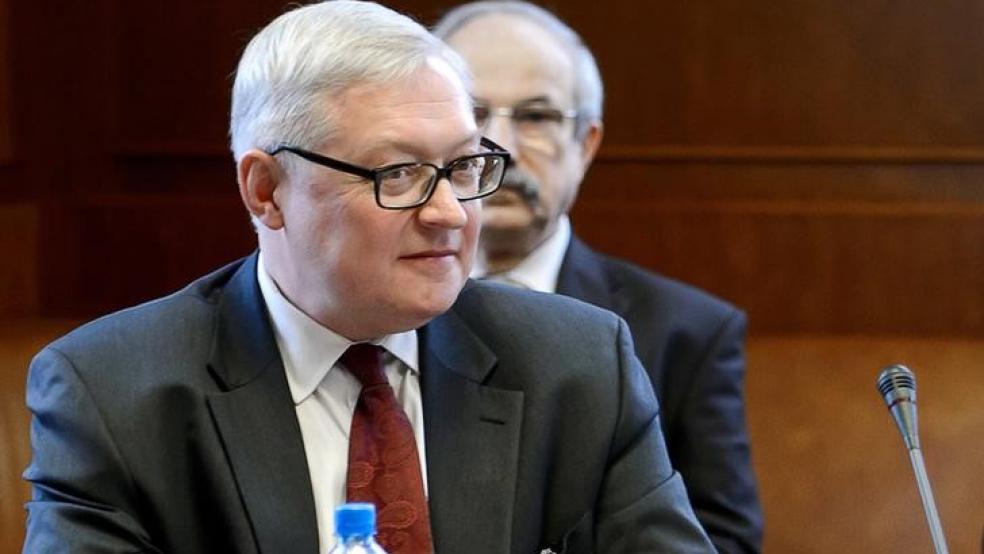In attacking the Obama Administration’s nuclear non-proliferation agreement and prisoner swamp with Iran that was concluded last weekend, Republicans renewed their complaint that Iran will be flush with cash to fund global terrorism with the help of $150 billion of unfrozen assets.
Republican Presidential frontrunner Donald Trump – the consummate deal maker -- complained that Iran won clemency for seven Iranians charged or imprisoned for sanctions violations and $150 billion of freed up funds to boot in exchange for the release of four Americans including Washington Post correspondent Jason Rezaian. “Doesn’t sound too good,” Trump told reporters in Portsmouth, N.H.
Related: Is Obama’s ‘Good Day’ with Iran the First of Many?
Former Arkansas governor, Mike Huckabee, another GOP presidential contender, angrily charged that President Obama was a fool for trusting Iran, one of the chief sponsors of terrorism around the globe, not to use that $150 billion against the interests of the United States. “Empowering Iran with sanctions relief is like Neville Chamberlin writing a $150 billion check to Adolph Hitler hoping he will play nice and behave,” Huckabee said.
For months, media reports and political speculation pegged the potential economic benefit to Iran of a lifting of international economic sanctions on its oil sales and other assets anywhere from $100 billion to $150 billion in the coming years. For example, on Sunday, The New York Times wrote, “It was unclear how [Iran] would spend upward of $100 billion in newly unfrozen funds – on long-delayed social welfare projects or on the proxy wars that have expanded Iranian influence.”
But on Monday, Secretary of State John F. Kerry said in an interview that the GOP’s long-standing claims of $150 billion of sanction relief to Iran were fanciful and that the actual number is $55 billion – or roughly a third of the amount being claimed by critics.
“That is a fictional number [and] I don’t know where it comes from,” Kerry said during an interview on MSNBC’s Morning Joe, where he vigorously defended the final agreement with Iran as making the world safer. “They will get about $55 billion over a period of time.”
Related: Lew: Iran Not Getting the Full $100 Billion of Frozen Assets
Kerry is one of the chief architects of the agreement requiring Iran to shelve its nuclear weapons development program for the coming decade or more in return for a lifting of sanctions that have stifled Tehran’s economy. During the interview, he also downplayed the notion that Iran would use the freed up funds to promote terrorism instead of meeting urgent domestic needs.
“Iran has well over five hundred to seven, eight hundred million dollars of requirements just to build its oil drilling capacity back, just to begin to build its infrastructure back,” Kerry said. “They have massive needs within their country, and we will be able to track where this money is going, what’s happening with it.”
The controversy over how much Iran stood to gain financially by the nuclear deal – and how that money would be used – dates back to last summer, when Kerry and the administration were trying to convince the Republican controlled Congress to accept the deal.
With estimates ranging from $50 to $150 billion or more from oil sales and assets currently frozen around the world, Senate Foreign Relations Committee Chair Bob Corker (R-TN) warned administration officials in late July that Iran would go from being “a rogue nation that had a boot on its neck” to a country reaping a windfall from sanctions relief.
Related: Kerry Accuses Critics of Iran Deal of Believing in 'Fantasy'
Kerry and others argued that the agreement would allow Iran to begin repairing its economy crippled by decades of punishing sanctions dating back to 1979, after revolutionaries overthrew the government of Mohammad Reza Shah Pahlavi, an ally of the U.S., and took Americans hostage. But precisely how much money in assets had been tied up over the decades remained largely a guessing game until recently.
During testimony before Corker’s committee July 25, Treasury Secretary Jack Lew sought to deflate the Republicans’ speculation about a massive financial windfall for the Iranians. “We estimate that after sanctions relief, Iran will only be able to freely access around half of these reserves, or about $50 billion,” Lew testified, seated with Kerry and Energy Secretary Ernest Moniz.
Lew indicated that at one point, the total was in the neighborhood of $100 billion. But he noted that $20 billion of the original $100 billion estimate is committed to development projects with China, which cannot be spent for other purposes, while “tens of billions in additional funds” constitute unpaid or “non-performing loans” that somehow must be accounted for by the Iranian government.
“Let’s be clear what those assets are,” Lew concluded. “It’s not money we are giving to Iran. It’s Iranian money that sits in other countries that was locked up because of international nuclear sanctions that were designed to bring them to the table to negotiate a nuclear agreement.”





